A Hyper-Crosslinked Carbohydrate Polymer Scaffold Facilitates Lineage Commitment and Maintains a Reserve Pool of Proliferating Cardiovascular Progenitors
- PMID: 28573188
- PMCID: PMC5441984
- DOI: 10.1097/TXD.0000000000000667
A Hyper-Crosslinked Carbohydrate Polymer Scaffold Facilitates Lineage Commitment and Maintains a Reserve Pool of Proliferating Cardiovascular Progenitors
Abstract
Background: Cardiovascular progenitor cells (CPCs) have been cultured on various scaffolds to resolve the challenge of cell retention after transplantation and to improve functional outcome after cell-based cardiac therapy. Previous studies have reported successful culture of fully differentiated cardiomyocytes on scaffolds of various types, and ongoing efforts are focused on optimizing the mix of cardiomyocytes and endothelial cells as well as on the identification of a source of progenitors capable of reversing cardiovascular damage. A scaffold culture that fosters cell differentiation into cardiomyocytes and endothelial cells while maintaining a progenitor reserve would benefit allogeneic cell transplantation.
Methods: Isl-1 + c-Kit + CPCs were isolated as clonal populations from human and sheep heart tissue. After hyper-crosslinked carbohydrate polymer scaffold culture, cells were assessed for differentiation, intracellular signaling, cell cycling, and growth factor/chemokine expression using real time polymerase chain reaction, flow cytometry, immunohistochemistry, and calcium staining.
Results: Insulin-like growth factor 1, hepatocyte growth factor, and stromal cell derived factor 1α paracrine factors were induced, protein kinase B signaling was activated, extracellular signal-regulated kinase phosphorylation was reduced and differentiation into both cardiomyocytes and endothelial cells was induced by scaffold-based cell culture. Interestingly, movement of CPCs out of the G1 phase of the cell cycle and increased expression of pluripotency genes PLOU5F1 (Oct4) and T (Brachyury) within a portion of the cultured population occurred, which suggests the maintenance of a progenitor population. Two-color immunostaining and 3-color fluorescence-activated cell sorting analysis confirmed the presence of both Isl-1 expressing undifferentiated cells and differentiated cells identified by troponin T and von Willebrand factor expression. Ki-67 labeling verified the presence of proliferating cells that remained in situ alongside the differentiated functional derivatives.
Conclusions: Cloned Isl-1 + c-kit + CPCs maintained on a hyper-cross linked polymer scaffold retain dual potential for proliferation and differentiation, providing a scaffold-based stem cell source for transplantation of committed and proliferating cardiovascular progenitors for functional testing in preclinical models of cell-based repair.
Conflict of interest statement
Conflict of Interest: Charles Lee of Molecular Matrix, Inc, is the creator of the scaffold used in this research. The remaining authors declare no conflicts of interest.
Figures
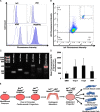
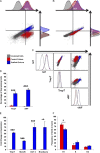
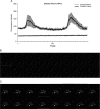

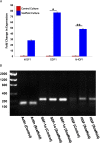
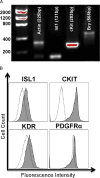

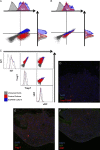
Similar articles
-
Activation of Notch1 signalling promotes multi-lineage differentiation of c-Kit(POS)/NKX2.5(POS) bone marrow stem cells: implication in stem cell translational medicine.Stem Cell Res Ther. 2015 May 9;6(1):91. doi: 10.1186/s13287-015-0085-2. Stem Cell Res Ther. 2015. PMID: 25956503 Free PMC article.
-
Human Induced Pluripotent Stem Cell-Derived Cardiac Progenitor Cells in Phenotypic Screening: A Transforming Growth Factor-β Type 1 Receptor Kinase Inhibitor Induces Efficient Cardiac Differentiation.Stem Cells Transl Med. 2016 Feb;5(2):164-74. doi: 10.5966/sctm.2015-0114. Epub 2015 Dec 18. Stem Cells Transl Med. 2016. PMID: 26683871 Free PMC article.
-
Chondrogenic progenitor cells promote vascular endothelial growth factor expression through stromal-derived factor-1.Osteoarthritis Cartilage. 2017 May;25(5):742-749. doi: 10.1016/j.joca.2016.10.017. Epub 2016 Oct 27. Osteoarthritis Cartilage. 2017. PMID: 27989872 Free PMC article.
-
Simulated Microgravity Exerts an Age-Dependent Effect on the Differentiation of Cardiovascular Progenitors Isolated from the Human Heart.PLoS One. 2015 Jul 10;10(7):e0132378. doi: 10.1371/journal.pone.0132378. eCollection 2015. PLoS One. 2015. PMID: 26161778 Free PMC article.
-
Endogenous cardiac stem cells.Prog Cardiovasc Dis. 2007 Jul-Aug;50(1):31-48. doi: 10.1016/j.pcad.2007.03.005. Prog Cardiovasc Dis. 2007. PMID: 17631436 Review.
Cited by
-
In Vivo Performance of a Novel Hyper-Crosslinked Carbohydrate Polymer Bone Graft Substitute for Spinal Fusion.Bioengineering (Basel). 2025 Feb 27;12(3):243. doi: 10.3390/bioengineering12030243. Bioengineering (Basel). 2025. PMID: 40150707 Free PMC article.
-
Use of a Novel Hypercrosslinked Carbohydrate Scaffold for Vocal Fold Medialization in an Ovine Model.OTO Open. 2023 Oct 9;7(4):e69. doi: 10.1002/oto2.69. eCollection 2023 Oct-Dec. OTO Open. 2023. PMID: 37823004 Free PMC article.
-
Hyper-Crosslinked Carbohydrate Polymer for Repair of Critical-Sized Bone Defects.Biores Open Access. 2019 Jul 1;8(1):111-120. doi: 10.1089/biores.2019.0021. eCollection 2019. Biores Open Access. 2019. PMID: 31346493 Free PMC article.
-
Effects of Spaceflight and Simulated Microgravity on YAP1 Expression in Cardiovascular Progenitors: Implications for Cell-Based Repair.Int J Mol Sci. 2019 Jun 4;20(11):2742. doi: 10.3390/ijms20112742. Int J Mol Sci. 2019. PMID: 31167392 Free PMC article.
References
-
- Behfar A, Crespo-Diaz R, Terzic A, et al. Cell therapy for cardiac repair—lessons from clinical trials. Nat Rev Cardiol. 2014;11:232–246. - PubMed
-
- Askari AT, Unzek S, Popovic ZB, et al. Effect of stromal-cell-derived factor 1 on stem-cell homing and tissue regeneration in ischaemic cardiomyopathy. Lancet. 2003;362:697–703. - PubMed
-
- Beltrami AP, Barlucchi L, Torella D, et al. Adult cardiac stem cells are multipotent and support myocardial regeneration. Cell. 2003;114:763–776. - PubMed
LinkOut - more resources
Full Text Sources
Other Literature Sources

